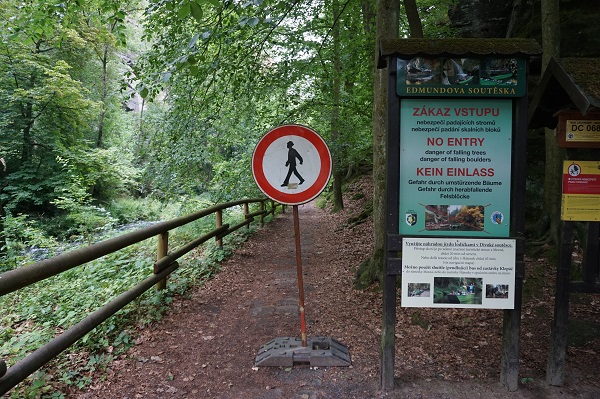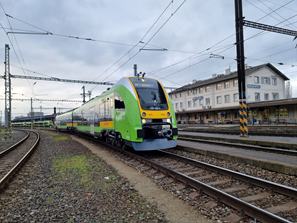Weekly review no. 9
24.11.2023
Deutsche Bahn is building a full tunnel variant
After months of testing, Deutsche Bahn has decided on a continuous tunnel for the new Dresden-Prague high-speed line through the Ore Mountains. This creates a 30 kilometer long tunnel that disappears underground near Heidenau and only comes to the surface again near Chlumec (Kulm) on the Czech side. It would be the longest railway tunnel in Germany.
A year ago, Deutsche Bahn limited the number of route variants from 10 to 2. The so-called full tunnel variant was not included in the railway's original plans, but was only brought into play by a citizens' initiative. The second so-called partially open variant had a shorter tunnel and a 27 kilometer long tunnel through the Ore Mountains. A bridge over the Seidewitztal was supposed to connect the two buildings.
The variant now chosen with the continuous tunnel is the best solution “for the environment as well as in terms of traffic, technology and economy,” Deutsche Bahn announced on Monday.
The new building, which is around 43 kilometers long, is intended to relieve pressure on the flood-prone Elbe valley and more than halve the travel time from Dresden to Prague from 2 hours 15 minutes to one hour. It is part of the future Berlin-Prague high-speed line and, in the future, continues to Vienna and the Balkans.
However, it will still be almost ten years before construction begins. The next big milestone for the project is the vote in the Bundestag on implementation and financing. This could happen in 2025. Deutsche Bahn expects building rights to be granted in 2032. The construction period is estimated to be around 12 years.
Edmundsklamm will remain closed in 2024

The Edmundsklamm, which has been closed since the devastating forest fire in the summer of 2022, will not open next year either. When asked, the Bohemian Switzerland National Park said that no opening date could be given. However, an opening in 2024 is ruled out. The same applies to the Gabrielensteig. The popular and panoramic hiking trail leads from Mezní Louka (Rainwiese) to Pravčická brána (Prebischtor). A total of 15 kilometers of marked hiking trails are currently closed. This affects around 5 percent of the hiking trails in the national park. The marking was removed for another 14 kilometers. You can hike there at your own risk.
The fact that a year and a half after the forest fire and years after the bark beetle catastrophe so many hiking trails are still closed was explained by national park spokesman Tomáš Salov, citing the different legal situation in the Czech Republic. All paths are now clear again in Saxony. The Bohemian Switzerland National Park, on the other hand, is responsible for safety on the paths. The national park is also liable for damage caused by the removal of dangerous trees. Strict protection requirements also apply in the quiet zone. The removal of trees causes significant associated damage. The natural regeneration is disrupted, there is a risk of instabilities in the rock and greater erosion stress occurs. This was also shown by the test clearing of a small section of the Edmundsklamm in the summer. However, the results of this pilot project are still pending.
Salov was confident that the first paths could be opened soon. But this applies more to paths in the back of Bohemian Switzerland. The decay process of damaged trees has already progressed far enough. This concerns the path from Hadí pramen (Snake Spring) to the Maiden Fir (Panenská jedle). At the same time, the national park is cutting down trees on many hiking trails to prevent further paths from being closed. The hiking trail at Brtnický potok (Zeidlerbach) is currently temporarily closed.
Municipalities and the tourism association, on the other hand, are demanding more effort from the national park in order to reopen paths more quickly. They accuse the national park of permanently closing hiking trails.
RegioJet displaces České dráhy from Ústí regional traffic

The Czech railway company RegioJet has won a tender to operate six electrified railway lines in the Ústí district. As RegioJet announced, they had submitted the lowest offer. With 90 percent weighting, the price was decisive for the outcome of the procedure. RegioJet will therefore take over the strategic lines U1 Děčín-Ústí nad Labem-Most-Kadaň, U2 Chomutov-Karlovy Vary and U3 (Děčín-) Ústí-Litvínov as well as the lines U32 Ústí-Lysá, U51 Ústí-Klášterec nad Ohří and U54 (Děčín - ) Ústí-Roudnice (-Hněvice). RegioJet already operates for the Ústí district on the routes Ústí nad Labem-Děčín on the right bank of the Elbe and Ústí-Upořiny-Most.
The Ústí district has not yet officially confirmed the outcome of the proceedings, citing the current objection period; the participants have been informed. However, the losing competitor České dráhy had made a statement, to which the Ústí district responded, thereby indirectly confirming the winner, RegioJet. So far, all lines have been operated by the state-owned České dráhy, for which the defeat is a significant loss. The Ústí district excluded České dráhy (ČD) due to a procedural error, writes the server zdopravy.cz. The company left it open whether ČD would object.
The new operator is scheduled to take over the routes when the timetable changes in December 2026. The operating contract is for 15 years.
Trekking huts for the Ore Mountains
The Krušnohoří (Ore Mountains) Tourism Agency plans to build 12 trekking cabins. They are intended to offer hikers a simple overnight camp. A simple wooden construction is planned. The huts should be equipped with photovoltaic systems and a small oven. The construction of the first two huts is planned in Adolfov near Telnice and in Sněžná near Kraslice in the Western Ore Mountains. The trekking huts are primarily intended to serve long-distance hikers. The new long-distance hiking trail Stezka Českem (Around the Czech Republic) runs through Adolfov.
Million-dollar projects for the Saxon-Czech border area
Improved early childhood education in the neighbor's language, cross-border cycle tourism and several nature conservation projects are among the projects that have received a commitment to receive funding from the European Union in the cross-border program Interreg Saxony-Czech Republic 2021-2027. At its meeting in Schönbach im Vogtland, the program's monitoring committee approved 17.7 million euros for 15 cross-border projects. The “Neighbouring Language from the Beginning” project was awarded almost 2 million euros under the leadership of the Euregio Egrensis, in which the Elbe/Labe Euroregion is also involved.
A little more than 2 million euros in funding will go to the “By bike to the neighbor” project led by the municipality of Doln'í Poustevna, in which the cities of Sebnitz and Hohnstein are involved.
A total of 28 Saxon-Czech projects have already been supported in the current funding period.
